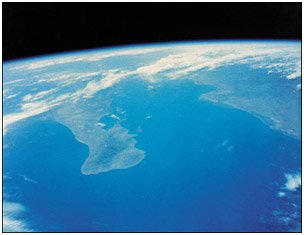Air Quality and Climate Change Research

Climate change can impact air quality and, conversely, air quality can impact climate change.
Climate Change Impacts on Air Quality
Changes in climate can result in impacts to local air quality. Atmospheric warming associated with climate change has the potential to increase ground-level ozone in many regions, which may present challenges for compliance with the ozone standards in the future. The impact of climate change on other air pollutants, such as particulate matter, is less certain, but research is underway to address these uncertainties.
Air Quality Impacts on Climate Change
Emissions of pollutants into the air can result in changes to the climate. These pollutants, including greenhouse gases, are often referred to as climate forcers. Ozone in the atmosphere warms the climate, while different components of PM can have either warming or cooling effects on the climate. For example, black carbon, a particulate pollutant from combustion, contributes to the warming of the Earth, while particulate sulfates cool the earth's atmosphere.
Research on climate change and air quality includes:
- Characterizing:
- Point source emissions of air pollutants and climate forcers
- Fugitive and area source emissions of air pollutants and climate forcers
- Mobile source emissions of air pollutants and climate forcers
- Wildland fire emissions
- Developing and verifying air pollution emissions inventories, including greenhouse gas emissions.
- Modeling chemical transport of air pollutants emitted into the atmosphere.
- Quantifying the health and economic benefits of reducing air pollution and emissions of climate forcers.
- Evaluating how different multipollutant/multisector control strategies can affect greenhouse gases and other air pollutant emissions.
The scientific knowledge and tools developed by EPA are enhancing the ability of state and local air quality managers to consider climate change in their decisions to protect air quality and to reduce the impacts of a changing climate.
Related Resources
- Air Research
- National Climate Assessment - EPA contributes to the U.S. Global Change Research Program’s development of the National Climate Assessment, including chapters on the impacts of climate on air quality. The Fourth National Climate Assessment was published in November 2018 and the Fifth National Climate Assessment is under development.
- Clean Cookstove Research - The majority of cookstoves used in developing countries emit black carbon, an air pollutant that contributes to warming of the atmosphere.
Related Tools
- GLIMPSE Model - GLIMPSE is a decision support modeling tool being developed by EPA that will assist states with energy and environmental planning through the year 2050. Users of GLIMPSE can explore the impacts of energy technologies and policies on the environment.
- Community Multi-scale Air Quality Model - CMAQ is EPA’s premier modeling system for studying air pollution from local to hemispheric scales.
Publications
- Science Inventory is a searchable database of journal articles, reports and presentations primarily by the EPA's Office of Research and Development.
